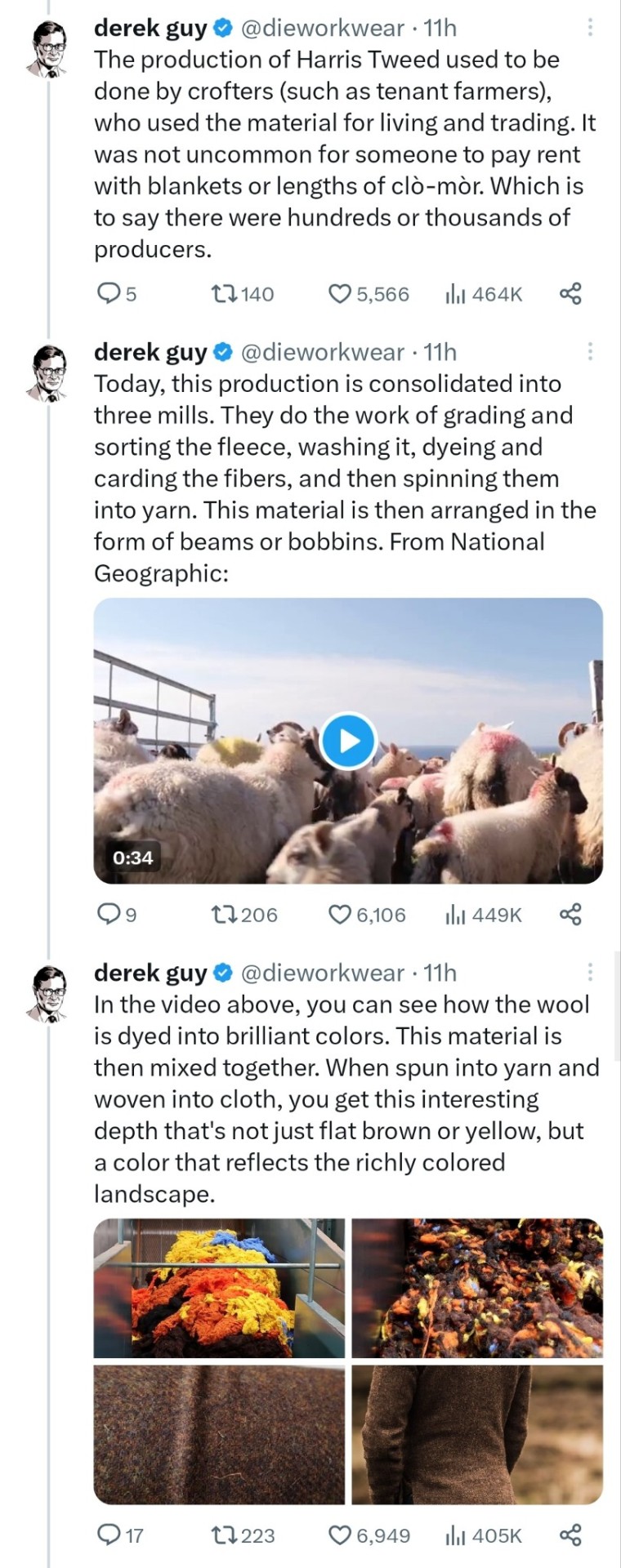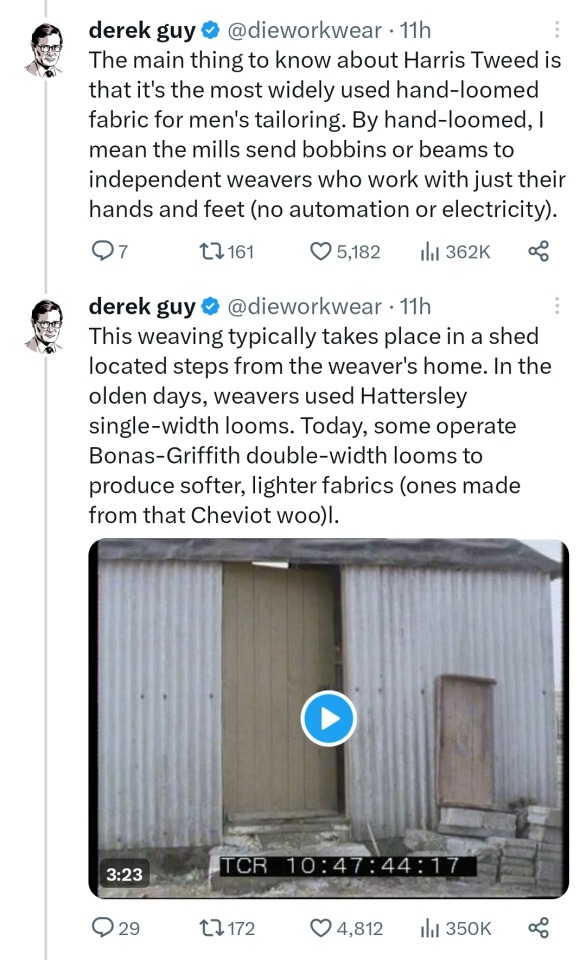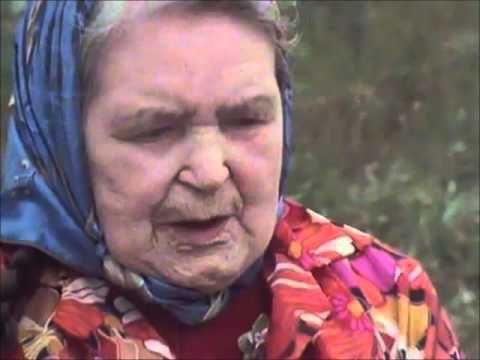#waulking
Explore tagged Tumblr posts
Text
youtube
Nighean sin thall, ho-ri ò ro Ho-ro, ghealladh i, ò hì ò ro Nach seall a-mach thu? Ho-ri ò ro Ho-ro, ghealladh i, ò hì ò ro
"In this waulking song, a woman is asked to look out and see if the moon is rising, and if the boat can cross."
Here are more traditional recordings from 1949 and 1951, both from Benbecula.
17 notes
·
View notes
Text



mutuals do this
4 notes
·
View notes
Text
HH: The Waulking Women of Scotland
'Wool waulking is a traditional Scottish process of finishing and strengthening newly woven woolen fabrics. It is a significant social and cultural activity, often carried out by women in the Highlands of Scotland. The Gaelic songs that are sung during waulking have a distinctive rhythmic pattern that aids in synchronising the work.'
(Video and text via Inverness Outlanders)
15K notes
·
View notes
Text
scottish au caduceus implies that ludinus daleth took part in the highland clearances (instead of doing fantasy chernobyl)
#or ludinus daleth is part of the monarchy that started to erase gàidhlig teaching from scotland .#(referring to my scottish cad art and also another scottish cad au headcanon cringefaecompilation posted )#silly post but : ) scottish clay family . rip clay fam you wouldve loved waulking songs you wouldve loved crofting#kiddo say
51 notes
·
View notes
Text
selkie playlist, as we all know, being the better of all the wizard playlists,
12 notes
·
View notes
Text
"Coisich a' ruin" - Capercaillie
Traditional, arranged Capercaillie
Or, how to give Bruno Brookes a nightmare.
Part of the UncoolTwo50 project, marking the best singles from 1977-99.
Pop music was at a low ebb in 1992. Demographics meant there weren't many teenagers around, and we were fracturing into a zillion tribes - the grebos, the crusties, the goths, the celts.

Music from the Celtic fringes had always had a place, usually mid-evenings on Radio 2, jostling for space on the Folk Show. Enya had shown that it was possible to take Celtic music from Ireland, add some New Age sparkle, and turn it into a very attractive commercial proposition. Runrig had had decent success for Celtic rock from Scotland.
Capercaillie were the stereotype fiddle-and-dram band, updated for the nineties with electric guitar and judicious use of synthesisers. Karen Matheson is the lead singer and focal point, Donald Shaw the other songwriter.
"Coisich a' ruin" is the oldest song in this list, first recorded in the late 1500s. It's also the first of three songs not in English.
When released on "The prince among islands" ep, a slow sales week and very careful targeting of the Gallup cells allowed them to get into the GB-wide top 40 and earn plays on Radio 1. Which is a remarkable achievement: a song even older than Fluff Freeman on the chart show!
youtube
The folk scene is loyal to its performers; perhaps to a fault, as many seem trapped in the same music they've always made. Capercaillie have continued to perform, they've innovated a little, and I reckon they've inspired a lot - the fiddle-based entertainment, as much show as tune, might have helped us get the young Lindsey Stirling.
#capercaillie#scots gaelic#waulking song#1992#folk music#fiddle and drum#one of the 50 greatest songs of the late 20th century#uncool two 50#uncooltwo50#pop music#20th century#1977-1999
1 note
·
View note
Text
here’s the video about waulking songs linked in the thread:
youtube
and here’s one of my favourite waulking songs:
youtube
The answer to "What the h*ck goes on on those islands to the North and West of mainland Scotland?" by Derek Guy @/dieworkwear on twitter [x]







26K notes
·
View notes
Text
youtube
Kathleen MacInnes (lead vocalist) performs the traditional Scottish waulking song "Gaol ise gaol i [She's my girl]" (Scottish Gaelic lyrics embedded), accompanied on fiddle by Allan Henderson, on whistle by Iain MacDonald, and on guitar by Steve Cooney.
0 notes
Video
youtube
Waulking Skye Weavers Tweed
“These women have stamina! As well as fantastic singing voices. A few highlights from the day I spent at Auchindrain Township, finishing a length of Skye Wool tweed over several hours with waulking groups Sgioba Luaidh Inbhirchluaidh and Cuigeal. Make sure you turn the sound on for a taster of some of the many traditional waulking songs (Òrain Luaidh in Gaelic) that are integral to this process and an important part of Scotland’s cultural heritage. Watch to the end to see the finished tweed back in Skye.”
- Skye Weavers
Find out more about waulking on our blog: https://www.skyeweavers.co.uk/blog/waulking-the-tweed
#youtube#waulking skye weavers tweed#skye weavers#Auchindrain#Skye wool tweed#waulking songs#Gaelic#Scotland#Skye#Isle of Skye#ancient ways#Ancestors Alive!#What is Remembered Lives#Memory & Spirit of Place
0 notes
Text
tryna figure out how to sing this, not this exact version but it's v lovely
#medieval music#one of the earliest surviving love songs (in the west ig)#will go nicely with that other lovey yearney waulking song i was learning once i have it down#Spotify
1 note
·
View note
Text
A Journey Through Scottish History: From Inveraray to Auchindrain
#Argyle#Argyll#Argyllshire#Auchindrain#Clans#Highland Clearances#Inveraray#Loch Lomond#Oban#Waulking Songs
1 note
·
View note
Note
Igglybuff: Do you like singing? What songs?
I'm not much one for singing, I'm afraid. I'll hum to myself, sometimes, but that's it.
#//lies. she remembers so many waulking songs it's kind of crazy#//she just associates them with an over-all bad time#//but she will sing them to herself and around 1 or 2 people that she trusts#ask games#//thanks for the ask! :)#pokemon irl
0 notes
Text


December 12th 1902 saw the birth of Nan Mackinnon or, to give her her Gaelic patronymic, Nan Eachainn Fhionnlaigh, at Kentangaval, Isle Of Barra.
Nan was a tradition-bearer, whose remarkable memory, enthusiasm, and love of the Gaelic oral tradition has ensured that her wealth of knowledge has been preserved and shared with future generations. She became known as Nan of Vatersay, or Nan of the songs.
Nan was the youngest of seven children. Her father, Hector (Eachann Fhionnlaigh), was also born and raised in Kentangaval, and was descended from the MacKinnons of Strath, Skye – the historic grazing constables to the MacNeils of Barra until the 19th century. Nan's mother Mary was from Mingulay, and had strong connections with the MacPhee family, who – according to local tradition – came to settle in Barra in the 14th century. Nan grew up in what was a politically tumultuous time in the Highlands, and this influenced her early life greatly. Despite having won security of tenure twenty years before Nan was born, there remained a strong sense of injustice at the uneven distribution of land in the Highlands. Having spent her early years in Barra, in 1907 Nan's father was part of the 'Vatersay Raiders' – landless cottars from Barra and Mingulay who carried out a land raid on Vatersay, establishing crofts on the neglected land. Despite the eventual failure of the Land Raid, Nan's family were eventually given a croft in Baile, Vatersay following the purchase of land on the island by the Congested Districts Board.
Nan's repertoire was among some of the most extensive and varied of her generation, and this is reflected in the recordings of her featured on the Tobar an Dualchais website. She came from a rich musical tradition, and was said to know around 400 songs by heart, most of which she learned from her mother. After receiving her schooling on the island, Nan left home when she was seventeen and – as was common for women of her age at the time – spent a number of years in service for a variety of people in Argyll. She also worked at the herring for a time, in both Shetland and Yarmouth before going to Glasgow. One of her sisters died suddenly in 1940, leaving four young children and a husband who was away at sea for long periods. Nan returned home to Vatersay to raise the children and remained there for the rest of her life.
Nan McKinnon had a great fondness for the stories and songs she knew, and she was convinced of the importance of the oral tradition to Gaelic communities. Growing up she would spend hours practising them until she knew them in their entirety. As Nan herself commented: "[Each story] tells the ways of the people that lived in those days. The waulking songs kept news alive from generation to generation. There were no newspapers, whereas today we read it in the papers and forget about it tomorrow. But the songs kept it alive. Those happenings that happened centuries ago are still to be told in song and story. It's wonderful." Over and above her repertoire of songs, Nan was also well known for her tales and legends – often of a supernatural nature – and her captivating story style. She also had a deep knowledge of the traditions of Uist and Barra, and was recording speaking about a variety of subjects from cures to feast days, to interpretations of omens and dreams. Her knowledge of the material culture of her native island was also extensive, and her recordings include discussions about traditional diet, including about what would be eaten when food was scarce.
There are almost 1,000 recordings of Nan on the Tobar an Dualchais website, the earliest dating back to 1953 when she was recorded by Donald MacPherson for the Canna Collection, several other visited her and recorded her over the years, she must have been quite the wee celebrity on Vatersay
James Ross summed up her significance as a tradition-bearer by saying: "Nan is the type of person that the folklore and folk-song collectors dream about. There is absolutely no trace of 'memory effect' as she responds to queries … Her answers are always a direct affirmative or negative, usually … the former. She never has to search her mind, and this, together with her unstinting co-operation, endless patience and subtle sense of humour, made the work of collecting a joy."
At the link below you can listen to Nan singing Griogal Cridhe, (literally "Gregor of the Heart", or "Beloved Gregor". It is a traditional Scottish lament and lullaby that was composed in Gaelic by Mór Chaimbeul ("Marion Campbell"), the widow of Griogair Ruadh Mac Griogair ("Gregor the Red MacGregor") (1541–1570), the chief of the Clan MacGregor of Glen Strae, who was executed at Taymouth Castle, Perthshire, on April 7th, 1570. There are many versions of the lyrics
Griogal Cridhe
Chorus;
Òbhan, òbhan, òbhan i ri
Òbhan i ri ò
Òbhan, òbhan, òbhan i ri
'S mòr, mo mhulad, 's mòr.
'S iomadh oidhche fhliuch is thioram,
Sìde nan seachd sian,
Gheibheadh Griogal dhomhsa creagan
Ris an gabhainn dìon.
Eudail mhòir, a shluagh an Domhain,
Dhòirt iad t'fhuil o'n dè,
'S chuir iad do cheann air stob daraich
Tacan beag bho d'chrè.
B' annsa bhi le Griogal cridhe
Teàrnadh chruidh le gleann,
Na le Baran mòr na Dalach,
Sìoda geal mu m' cheann.
Chan eil ùbhlan idir agam,
'S ùbhlan uil' aig càch,
'S ann tha m'ùbhlan-s' cùbhr' ri caineal
'S cùl a chinn ri làr.
'Nuair a bhios mnàthan òg a'bhaile,
'Nochd nan cadal sèimh,
'S ann bhios mis' air bruaich do lice,
'Bualadh mo dhà làimh.
Many a night, wet or dry
weather of the seven elements
Gregor would get me a rocky shelter
Against the storm
Greatest treasure in all the world
They spilt your blood yesterday
And they put your head on a post of oak
A little way from your body
Would that I were with beloved Gregor
Herding cattle in the glen
Than with the great Baron of the Dale
White silk around my head
I have no apples at all
Others have all the apples
My apple with the fragrance of cinnamon
The back of his head to the ground
When the young women of the village will be
Tonight sleeping soundly
I will be at your graveside
Beating my two hands
With the above being a lament I thought I would post another song from Nan, Haoi Ho Nach Dannsadh Sibh E is a much more upbeat song, according to the notes Nan’s mother heard this song from Lewis women at the fishing. Another source tells me that this is the only variant of that song, so without t the work of the likes of Donald MacPherson, and indeed Margaret Fay Shaw, some of these songs would have been lost to the world, they are an integral, very important part of our Gaelic roots. This song is a light vocal dance tune with a love theme. The song is of the type common among the women who worked as herring gutters.
https://www.tobarandualchais.co.uk/track/108438?l=en
77 notes
·
View notes
Text
The person helping me ouy today had an ao3 sticker on their water bottle
Doing physical therapy can make me feel so stupid sometimes . Look at me walk around pathetically with weighs on my hands ium such a fuckinh loser . The walk of shame
#btw this is so ok to reblog i am funny the world deserves to see me . and me randomly talking about my life .#ollie lore drop ⚠️ ⚠️ ⚠️ ⚠️#i cant fickimg waulk
14 notes
·
View notes
Note
(Barrel rolls in here)
I've sent this to another blog in an attempt to convert them to Hozier loving as you & I do, but I wanna share this concept with you. If you need someone to rant about Hozier songs with different TWST guys, I'm your bitch. Love me my Irish bog fae music.
(ALSO, same brain with that one anon for thinking that In A Week is Rook & Jade-coded, I KNOW IN MY HEART OF HEARTS THAT ROOK WOULD BE A HOZIER GIRLY—)
From Eden gives me such Jamil vibes, and not even just with the snake imagery— the idea of being infatuated with someone who has the innocence & freedom you no longer have, the conflicting desires to corrupt them yet also preserve that innocence is just a MAGNIFICENT parallel to Jamil's place in life.
Honey, you're familiar like my mirror years ago
Idealism sits in prison, chivalry fell on its sword
Innocence died screaming, honey, ask me I should know
I slithered here from Eden just to sit outside your door
— 🐈⬛
Hiiii! A new anon perhaps?? hihihihi 🐈⬛ anon, I love Hozier so much I love the way be used folk with southern blues and black gospel elements in his songs, and I really like when he blends elements, like in Work Song he uses the idea of waulking songs with the rhythm of black working songs and it blends so beautifully! I just love his music very much and the thought he puts behind it and the genre he's in.
In a Week is def Rook and Jade coded, but for the multi oneshots I felt that Jade also fit It Will Come Back a lot as well, so I put him there.
From Eden I think does fit Jamil well, as well as a few others in the cast with the whole devil corrupting a someone sweet theme. One big thing with Hozier is that a lot of his songs are bittersweet or have some dark themes that you don't immediately pick up on at first listen, so a lot of songs I would initially assign to some of them I wouldn't anymore.
Cherry Wine is a good example of that I think, where Hozier is singing about an abusive relationship, though at first or a surface listen you wouldn't immediately register that. I would know cause I assigned it to Leona originally and then stopped upon a relisten lol
Since we're talking about Jamil though, I think Anything But is a really good song for him, as it's about someone who, though they love their partner deeply and sweetly, they want to push them away for reasons we the listener don't know.
He's happy to let the world burn for all it's put him through:
I'd lower the world in a flood or, better yet, I'd cause a drought
But that lyric immediately follows up with the desire to keep the person he loves safe against his anger:
If I was a riptide, I wouldn't take you out
Why Would You Be Loved? I think also fits him, as Jamil in his eternal servitude is questioning why should he love and be loved by you when all he will be is a servant, which I think these lyrics reflect well:
They look for somethin' to be done for those that are most in pain What about me and my achin'? The scales rehung, the breakin' of yoke and chain What about me and my breakin'? And if you ain't for all, how could you try at all, baby?
And last, I really like Dinner & Diatribes for him as well, as a sort of finality to my little list here (lol) where he just has to admit that he is addicted to you, drawn to you, and thinks about how you two will spend your night next:
A pillar I am, upright Scarcely can speak for my thinkin' What you'd do to me tonight
Ugh, Hozier is just great and I can think of so many songs I can apply to the others, some I've listed here and in my oneshot apply to more within the cast too.
#mochi asks#🐈⬛anon#twst#twisted wonderland#jamil viper x reader#twst x reader#twisted wonderland x reader#jamil viper#ngl this is the most i've written for jamil in ages loooool
20 notes
·
View notes
Text
I love folk music so much I love music traditions passed down through generations I love folk instruments I love the use of music as a vessel to voice the shared experiences of people I love everyday people performing folk music to keep that aspect of their culture alive I love the spread of folk music online so I can be introduced to more of it I love protest songs and laments and jigs and shanties and work songs and spirituals and waulking songs and ballads and drinking songs etc etc I love them so much
262 notes
·
View notes